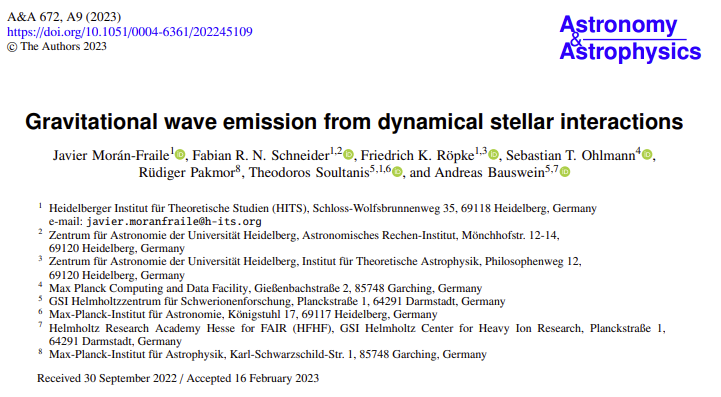Gravitational wave emission from dynamical stellar interactions

Authors: Morán-Fraile, Javier; Schneider, Fabian R. N.; Röpke, Friedrich K.; Ohlmann, Sebastian T.; Pakmor, Rüdiger; Soultanis, Theodoros; Bauswein, Andreas
Abstract:
We are witnessing the dawn of gravitational wave (GW) astronomy. With currently available detectors, observations are restricted to GW frequencies in the range between ∼10 Hz and 10 kHz, which covers the signals from mergers of compact objects. The launch of the space observatory LISA will open up a new frequency band for the detection of stellar interactions at lower frequencies. In this work, we predict the shape and strength of the GW signals associated with common-envelope interaction and merger events in binary stars, and we discuss their detectability. Previous studies estimated these characteristics based on semi-analytical models. In contrast, we used detailed three-dimensional magnetohydrodynamic simulations to compute the GW signals. We show that for the studied models, the dynamical phase of common-envelope events and mergers between main-sequence stars lies outside of the detectability band of the LISA mission. We find, however, that the final stages of common-envelope interactions leading to mergers of the stellar cores fall into the frequency band in which the sensitivity of LISA peaks, making them promising candidates for detection. These detections can constrain the enigmatic common-envelope dynamics. Furthermore, future decihertz observatories such as DECIGO or BBO would also be able to observe this final stage and the post-merger signal, through which we might be able to detect the formation of Thorne-Żytkow objects.
